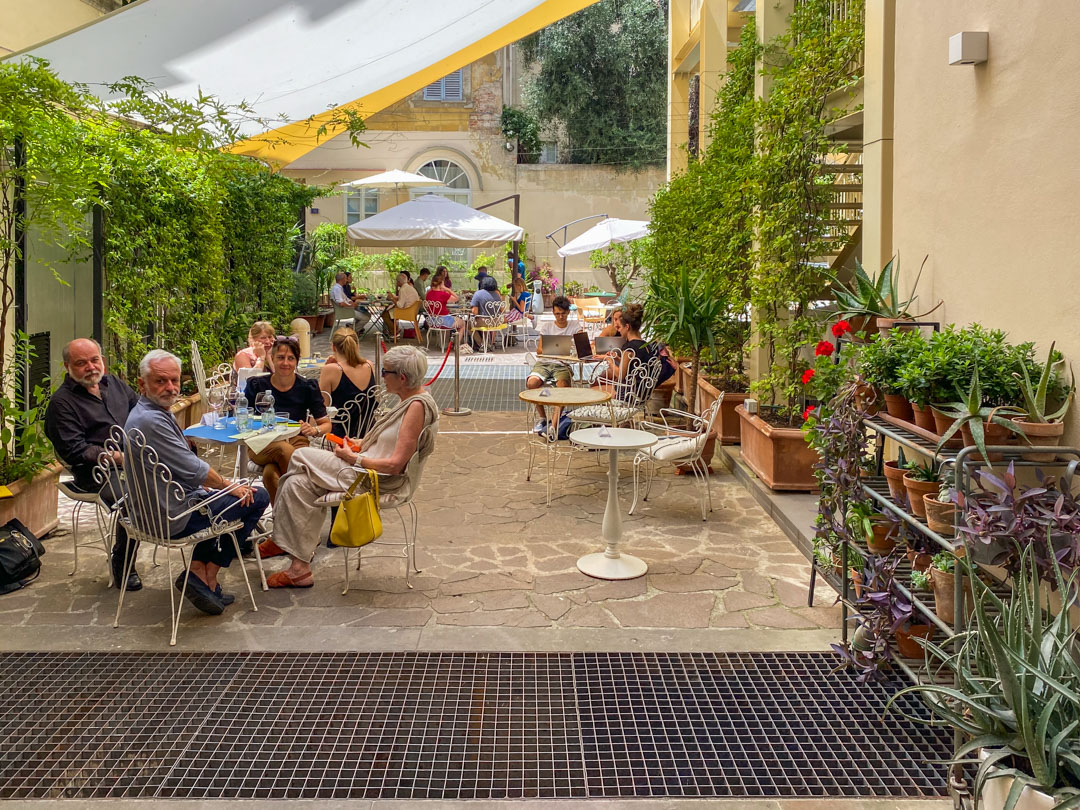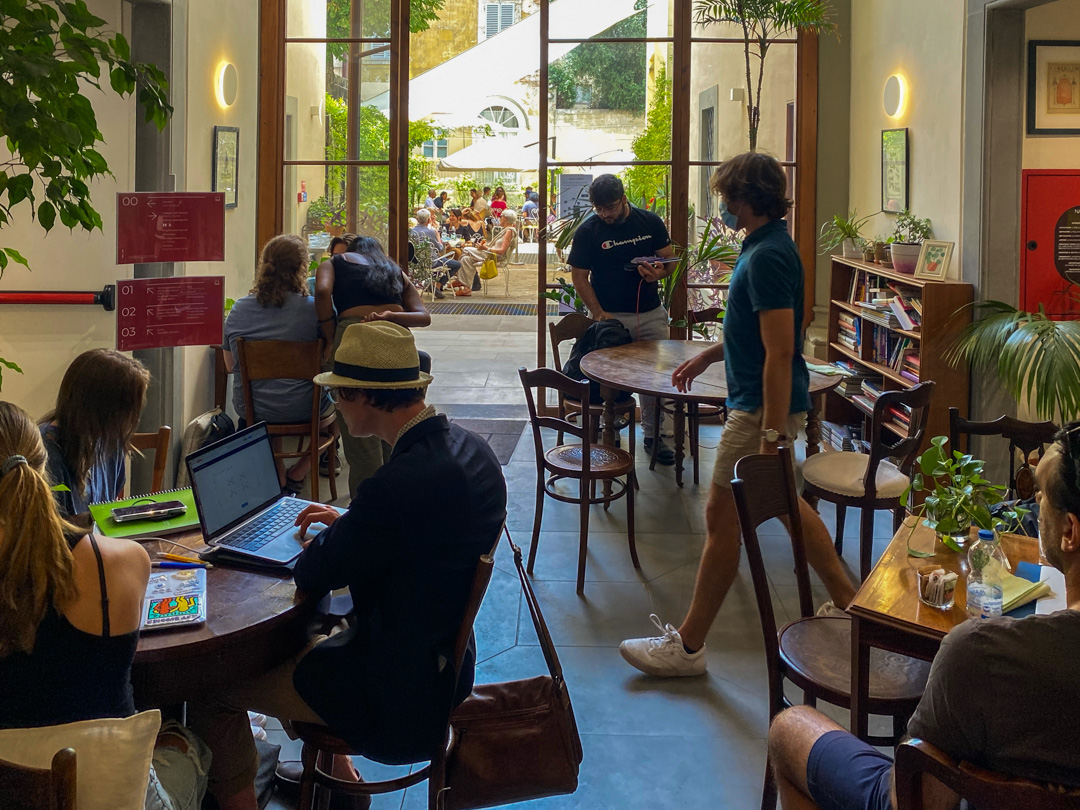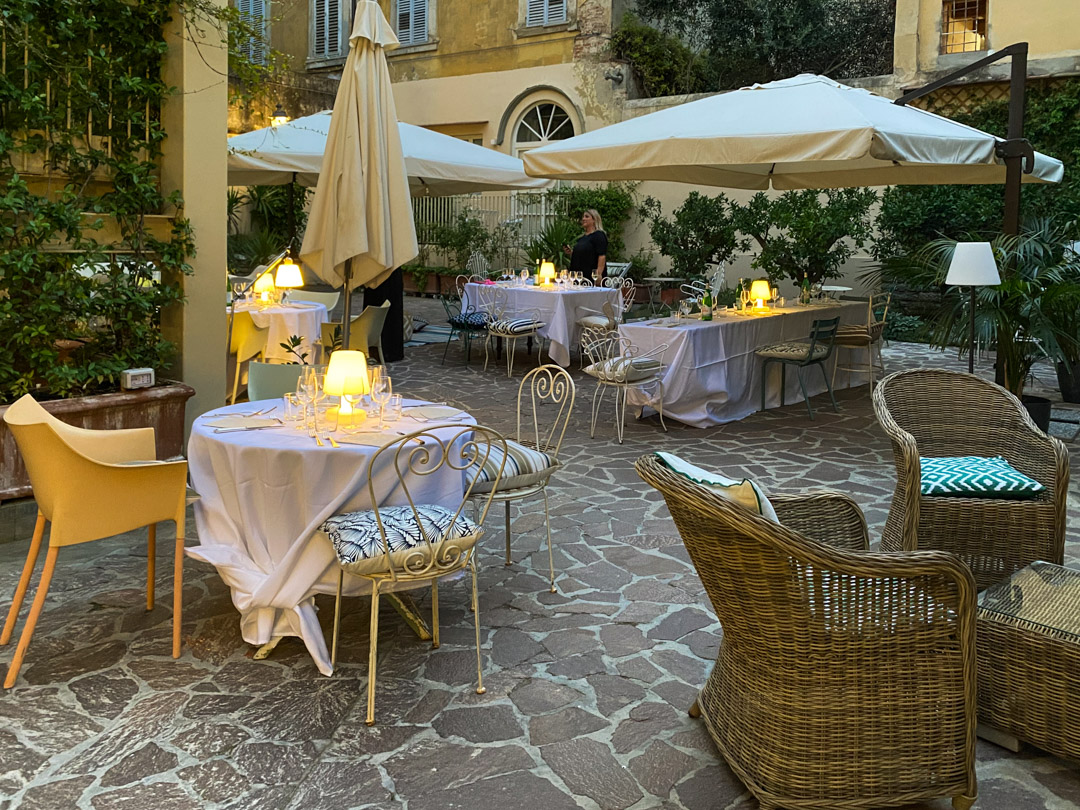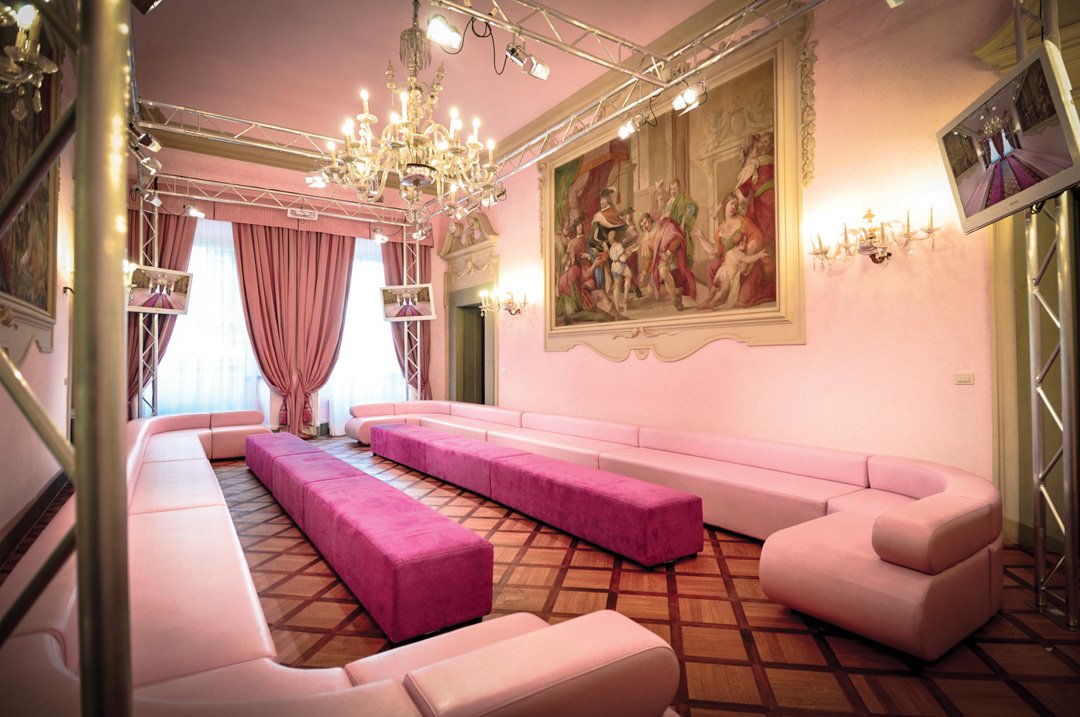Preface 2023
Preface – magazine 2023 A contemporary magazine feeds upon dynamism and vigour. It instantly perceives the inputs deriving from the readers and evolves, offering its best at...
Preface – magazine 2023 A contemporary magazine feeds upon dynamism and vigour. It instantly perceives the inputs deriving from the readers and evolves, offering its best at...
Florence University of Arts – The American University of Florence FUA – AUF Architect, writer, entrepreneur and the art of cooking Florence – Walking in Via...
Every morning, on time, a few moments before dawn, which, in that region, smelled of thousands of woods, Sumio, who everyone in the village knew as “the Japanese”,...
In recent months, South Korea has risen against Beijing’s want to associate the pao cai speciality with its most representative and identifying gastronomic recipe based on...
The plague described by Manzoni arrived in Milan in the autumn of 1629, spreading gradually in 1630. In May of the same year, everything fell apart, so much so that people...
An interview with Alberto Tintori of OSCAR TINTORI VIVAI By Fiamma Domestici I have always nourished an unconditional passion for the noble citrus fruits of the Tuscan tradition,...
The Westernization of Japan: the Meiji Renewal With the expression Meiji Renewal (明治 維新), we indicate the radical change in the political, economic and social structure of Japan,...
4A Liceo scientifico (astronomico) – Gobetti-Volta, Bagno a Ripoli (Firenze)* The universe that revolves around food and Renaissance banquets has always had a link with the...
During the classic lunch breaks at the office, dinners with friends or Sunday brunches, how many times do we happen to think about the technology associated with the meal we are...
The subtleties of nature and health One of the most significant female figures of the early Middle Ages, Hildegard, lived along the Rhine River, in the tract that separates Hesse...
“Autumn. We already heard it coming / in the August wind, / in the September rains / torrential and weeping…”, this is how Vincenzo Cardarelli sang this...
Florence University of Arts – The American University of Florence FUA – AUF
Architect, writer, entrepreneur and the art of cooking
Florence – Walking in Via Ricasoli, with the Galleria dell’Accademia on one side and the dome by Brunelleschi on the other, the large door of the historic building attracts the attention of passers-by, Italians and foreigners. It is the Palazzo Villani Stiozzi Ridolfi, at number 21.
The door opens onto a spacious internal garden, called the Cafaggio del Vescovo, full of tables and an elegant and intimate Café & Bistro, with its delicious pastries. People stop and look because it does not look like a café, but it is. It does not look like a pastry shop either, but it is!


This is, in fact, the entrance of the Florence University of Arts (FUA-AUF), the American University of Florence, founded and led by Gabriella Ganugi. She is a Florentine architect – by birth and training – but an entrepreneur, writer, and cook, too. For over thirty years, she has dedicated herself to international education. Four thousand students a year from all over the world come to FUA-AUF. The University collaborates with over one hundred and fifty foreign universities with an offer of nearly four hundred courses each
academic season, where experience in the field is the learning method.
We met Gabriella there, in her historic citrus and aromatic herb garden. Passed from Florentine family to family over the centuries, without ever having been open to the community from 1200 to today, it currently hosts the non-profit Palazzi Foundation. We meet to talk about her, her job and her project. A significant, international reality in the cultural, educational, training and working life of the city.
The Foundation raises funds for scholarships for annual, biennial and four-year courses in collaboration with the FUA-AUF.
Palazzo Villani Stiozzi Ridolfi and the Cafaggio del Vescovo garden are home to two academic divisions of FUA-AUF, Apicius International School of Hospitality, founded in 1997, and the International School of Business. The location also hosts the creative laboratories of both, where learning is shared with the local community: Fedora Pastry Shop and Bistro, Sorgiva Spa, Dimora Guest Apartments, Pomario Botanical Retail Store, as well as the Corridoio Fiorentino gallery for the digital and fine arts departments. Apicius also has another restaurant lab called Ganzo in the S. Ambrogio neighborhood. Beyond the hospitality and business disciplines, the institution’s schools include digital imaging and visual arts, interior design and architecture, journalism and communication, arts and sciences, fashion and accessories design and technology. Each of these divisions feature their own creative learning lab such as a gallery, campus press, fashion retail store, etc.
All of this is open to the community and run by students.

These entities are non-profit and focus on learning by doing.
Gabriella has the fast pace of someone who does many things altogether. Someone who does not want to waste time but progress and who can put together action and thinking. She knows how to see beyond things. She is a visionary in the best meaning of the word. She knows how to understand people and situations swiftly.
In one of the seventeen books she has published, The Little Girl who counted Ants1, she describes in this memoir how she started collecting the recipes. The recipes of her mother and grandmother, and hers, all of which marked different paths of her life. As her author’s bio states, “For Gabriella, life is made up of smells and tastes… She loves greenhouses, winter gardens, and the October light. She thinks that champagne is one of the greatest inventions in history.” Furthermore, she shares in the book’s introduction, “A heightened sense of smell was a telling sign that I had evidently ignored for years and improperly used to memorize places, atmospheres […] It’s possible to not remember the color of a person’s eyes but the scent of their body, of their breath, are always precisely embedded in my mind”.
In a chapter on women and work, she continues: “I cook. I know how to prepare food. I collect recipes and cook for everyone. I want to open a culinary school. I want this with every fiber in my body. I want to teach Italian cuisine to these students who come to Florence because they love our country and our culture. I want to teach them how much the smell of castagnaccio and the simmering ribollita on the table are part of us, part of our lives, of what we are today. We are our own history, but we can construct a better one by opening the doors and sharing our experience and values”.
She became an entrepreneur thanks to her strength and the support of those who loved and believed in her. She divides her time between Florence and New York, Italy and the US, the country she loves and that represents a cornerstone of her career in international education. Despite the many difficulties encountered along the way, luck favors the bold, and she has definitely embraced challenges!

A memoir excerpt gives us a glimpse into the world she has built:“Ideas idly linger in my mind before taking shape…Something clicks and an idea transforms. I manipulate the thought and I take it afar. I watch and transform it. Then it becomes real, and I jump to my feet…Each day that I cross the threshold of the institution I’ve built, shivers run along my spine. I still find it hard to believe that all of this has really happened, that my dream isn’t a delirium, that this microcosm of people and students is the result of my work, my hard efforts as a woman, my story”.
I ask Gabriella a question that I have asked various chefs before her, both women and men.
— Do women cook differently from men?
“Absolutely not!” she replies with certainty. “It is just the same”.
The detail that I immediately noticed, because chefs have always answered differently, is the importance of scents and aromas. Recollections of the smell of food, a particular perfume or dish, or a specific memory linked to them.
On the other hand, the psychologist in me can’t help but to acknowledge the rhinencephalon as the oldest, most primitive part of our brain, from which the emotional centers developed.
“Look, smell, listen, touch, taste. We must never stop studying and learning. I am constantly evolving as a person. And through creation, I renew myself,” Gabriella affirms.
An hour together passed very quickly. At the entrance to the garden, we say goodbye.
Gabriella starts off again, busy with commitments, at a brisk pace.
An extraordinary woman, a young soul with an ancient heart, and an acute intelligence.
I put my thoughts back together for this interview, walking backwards through Via Ricasoli
[1] Gabriella Ganugi, La bambina che contava le formiche, Meditazioni in cucina, Ingorda per Florence Campus Editore (2019)⇑